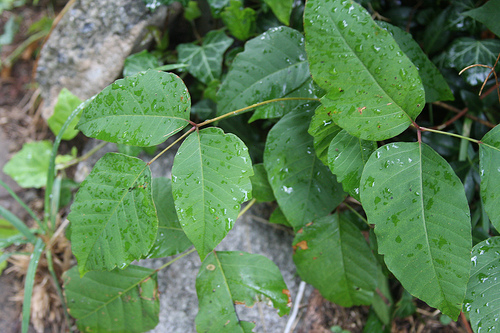
Poison Ivy: "Leaflets Three - Let It Be"
Also known as "poison oak", poison ivy is a trifoliate leaf (with three leaflets) that usually grows in forests as a shrub, a climbing vine or a trailing vine. People generally get in contact with poison ivy when they go hiking or go on camping trips in the woods. Poison ivy causes a reddish, urticaria-like rash at the point of contact with the skin. Instead of the rash, some people may get papules or fluid-filled blisters of various sizes. The rash can be itchy, painful or not, depending on the individual; and could also lead to a full-blown anaphylaxis reaction. But as we can see, the reaction depends on each individual, and some people don't experience any reaction at all. But it's better to be safe than sorry!
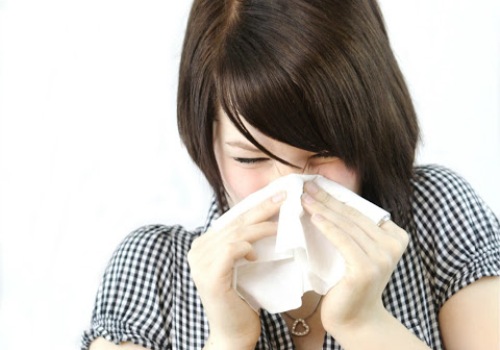
Hay Fever
Hay fever is also a very commonly encountered summertime allergy. It is a type of allergic rhinitis, which is basically an allergic reaction localized in the nasal airways. Allergic rhinitis is peculiar because it is generally caused by inhalation of plants, grass, trees, weed or flower pollen in gardens. But when it is specifically caused by grass pollen, it is called "hay fever". Sufferers usually experience runny nose, itchy nose, ears and throat, redness of the nose and eyes, and continuous sneezing, especially upon waking up in the morning. Injection of steroids (intranasally) is usually the best option to relieve the symptoms. But if they are not too severe, they easily vanish within a few days.
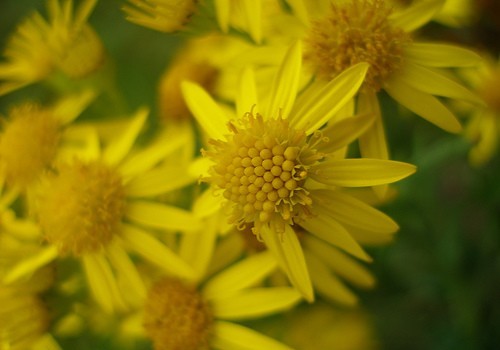
The Most Potent Plant Allergen, Ragweed
Ragweed is a flowering plant that generally grows on sunny, sandy and grassy soils in rural areas. Ragweed is a highly allergenic plant, and each plant is thought to produce about 1 billion pollen grains per season! So imagine what this could mean for those of us who are sensitive to pollen. Generally, a ragweed allergic reaction develops two days following the exposure, and because the reaction is delayed the subject might not quickly identify the cause of the allergy. It usually presents as localized small itchy blisters. The reaction disappears after two weeks, but you could still control the itching with a corticosteroid cream such as hydrocortisone.
- Important notification about information and brand names used in this slideshow!
- Photo courtesy of Niall McAuley by Flickr : www.flickr.com/photos/gnmcauley/1303569853/
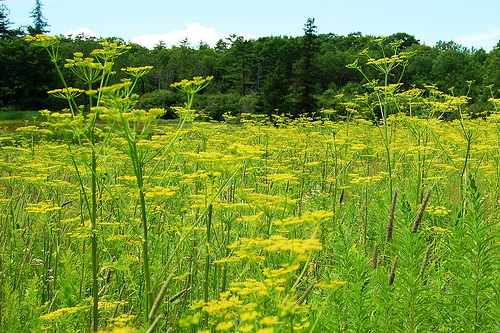
Wild Parsnip: Beautiful Plant...But Stay Away From It!
Wild parsnip grows as a beautiful bouquet in sunny areas, mostly prairies. It's a beautiful plant, but stay away from it! It achieves its peak growth around the month of July. Because the plant is constantly exposed to sunlight, the sun reacts with the sap contained within the plant, and this could cause a burn-like reaction on the skin at the first contact. Within a day, blisters form and when they dry, the skin will turn brown, a coloration that could last up to a month! So how to recognize wild parsnip? The plant grows as a bouquet, with large and beautiful clusters of small yellow flowers with thick green stems.
- Important notification about information and brand names used in this slideshow!
- Photo courtesy of InAweofGod'sCreation by Flickr : www.flickr.com/photos/nhoulihan/3741684614/
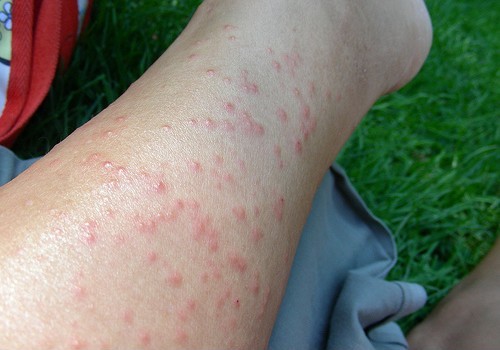
Heat Rash (Miliaria)
Heat rash - not heat burn - forms following prolonged and consistent exposure to heat (and sunlight). Biologically, what happens is because of the heat, a high volume of sweat is produced, but not everything can be released at the surface of the skin. Consequently, the sweat ducts are blocked and this results in fluid filled bumps on the skin. This could happen following a long day at the beach or a prolonged tanning session, out in the sun. However, it is important to mention that this condition is more likely to occur in children, due the fact that their sweat glands are underdeveloped. Heat rash generally resolves on its own when you limit your sun exposure and move to a cooler area.
- Important notification about information and brand names used in this slideshow!
- Photo courtesy of laughingmonk by Flickr : www.flickr.com/photos/laughingmonk/1352247465/
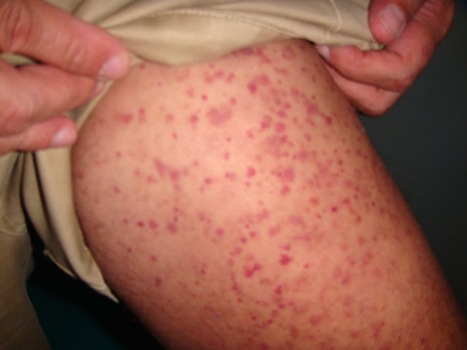
Polymorphous Light Eruption (PMLE)
This condition only occurs in people who are extremely sensitive to sun. In fact, those people are so sensitive that they experience the rash only few hours after sun exposure. The rash is called "polymorphous" because the red spots have different shapes. They cluster together and form a flat, reddened area on the chest, the neck, the shoulders, the arms or the calves (sun exposed areas). Unfortunately, this rash is itchy but scratching it would only worsen your reaction and possibly leave a horrible scar. So in case this happens, we would recommend that you use a corticosteroid cream (such as hydrocortisone). The rash generally vanishes within few days. In the event that it doesn't, or if it becomes painful, please consult a Doctor.

Ouch! Chigger Bites!
First of all, what are chiggers, and how do they bite? Chiggers are the larvae of scrub and harvest mites. They are generally encountered in the woods or in open fields, during summer. They feed on the fluids that are present on our skin cells, such as water and sweat. So when they get to our skin, they cling to a skin pore (or a hair follicle), then inject an enzyme that would break the skin cells; thus allowing them to suck up the fluid. That is the chigger bite. At the end of the day, you are left with an itchy and reddish bump (wherever you got bitten) that last for several days. The standard way to manage chigger bites is to take a clean shower and then apply hydrocortisone to the bite site. Very important notice: avoid scratching your skin at all costs!
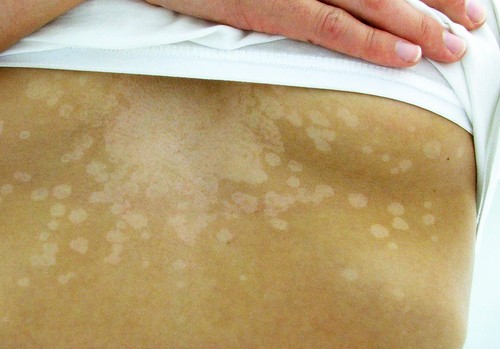
Tinea Versicolor (Fungal Infection)
Tinea Versicolor is a skin condition caused by the fungus Malassezia Furfur. Surprisingly though, Malassezia species are normally found on the skin surface of many animals AND humans! However, they do not cause any harm (at least most of the time). Nevertheless, Tinea Versicolor could develop in some individuals who tend to sweat a lot, especially in the back. It is also common in athletes and those involved in sports. The rash is pale, salmon-colored; and simply looks like skin discoloration patches on the back. However, it's neither itchy, nor painful. Tinea Versicolor can be attenuated with over the counter anti-fungal creams and sulfur shampoos (applied on the back). Unfortunately, the condition is very hard to treat, and has a tendency to recur when re-exposed to humid conditions.
- Important notification about information and brand names used in this slideshow!
- Photo courtesy of Sarah Korf by Flickr : www.flickr.com/photos/sarahrosenau/462299385/

The Swimmer's Itch
This condition is caused by waterborne micro-organisms called schistosomes. Those organisms normally live in fresh water lakes and are released in the water during sunny days; because apparently summer belongs to everyone! What happens is, the schistosomes penetrate the pores of your skin while you swim. However, they don't live very long out of the water, so they most likely die when you get out of the water. Nevertheless, you are left with uncontrollably itchy red bumps, all over your body. It could be a very uncomfortable situation, as this will also limit your choice of clothing. The itching can be managed with a hydrocortisone cream. So this summer, avoid the Swimmer's Itch by avoiding swimming in lakes, rivers or ponds.
- Important notification about information and brand names used in this slideshow!
- Photo courtesy of Cheryl Reed by Flickr : www.flickr.com/photos/cheryldudley/3785620457/
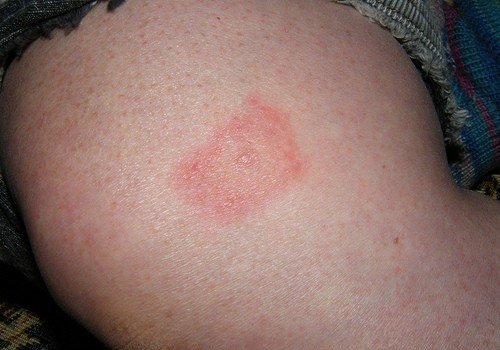
Lyme Disease, Not Caused By Limes!
No, it's not caused by eating limes, but rather by a tick bite. The tick carries a parasite called Borelia Burgdoferi. It generally occurs following a hike in the woods. The symptoms appear within a few days and start like flu, coupled with bones and joints pain. So if you suddenly start experiencing flu-like symptoms (runny nose, mild body pains, fever, headaches, fatigue, etc.) after a hike, suspect Lyme disease. After about three days, a characteristic "bull's eye" rash develops; which derives its name from its appearance: it looks like a bull's eye. The rash generally forms on the site of the tick bite, so it could be on any part of your body, even on your head. If you suspect that you could be suffering from Lyme disease, contact a physician immediately to begin the treatment; as life-threatening complications (involving your heart, bones and nervous system) could occur.
- Important notification about information and brand names used in this slideshow!
- Photo courtesy of Chris Booth by Flickr : www.flickr.com/photos/monkeypuzzle/3490267501/






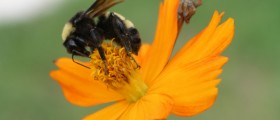


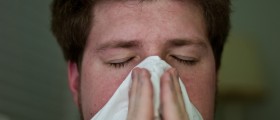




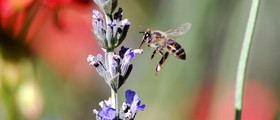
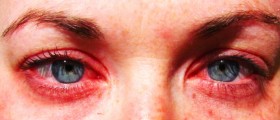
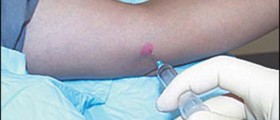
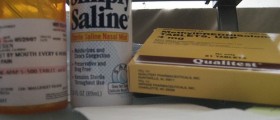

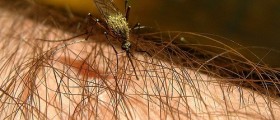
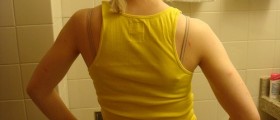






Your thoughts on this
Loading...